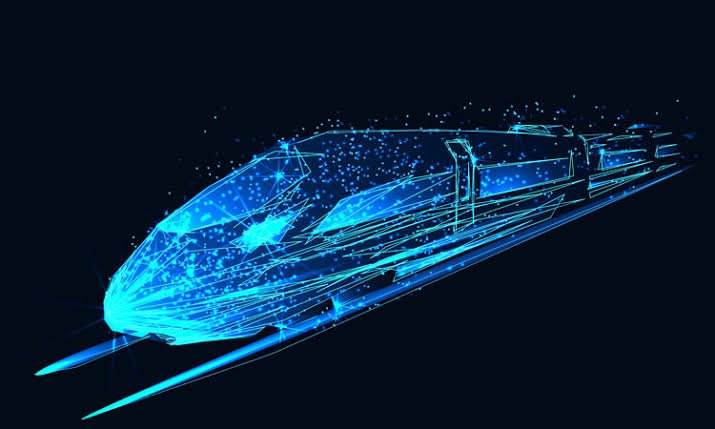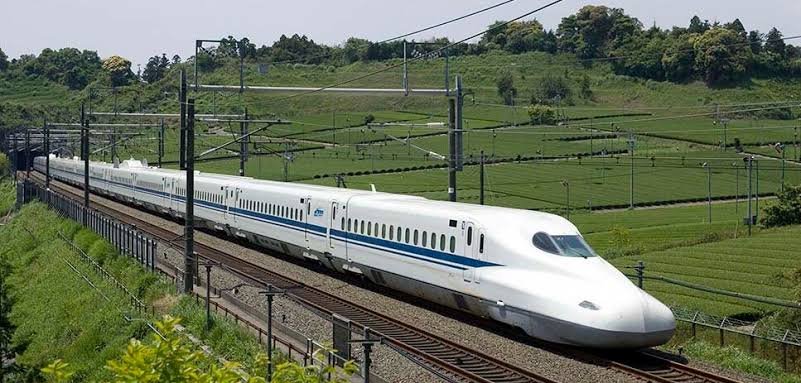Introduction: Revolutionizing Travel from Varanasi to Howrah
The Indian Railways is embarking on a groundbreaking experiment that will alter the way people travel between Varanasi in Uttar Pradesh and Howrah in West Bengal. The high-speed bullet train route, spanning 800 kilometers, is intended to slash the journey time from the current 12-14 hours to just 3-4 hours. With building work officially beginning, this enormous project promises to boost communication between the northern and eastern areas of India, making travel faster, more efficient, and comfortable.

This high-speed rail track would not only shorten the distance but also drastically influence the socio-economic landscape of the territories it passes through, including sections of Bihar and Jharkhand. The project is a critical step in India’s ambitions to improve its railway safety, infrastructure and incorporate new transportation technology.
Project Overview: The Varanasi-Howrah Bullet Train Corridor
The projected high-speed bullet train line between Varanasi and Howrah is part of the Indian government’s bigger aim to establish a comprehensive high-speed rail network across the country. The Varanasi-Howrah line is being constructed by the National High-Speed Rail Corporation Limited (NHSRCL), which has already completed the requisite surveys and is now in the process of acquiring land for the project.
Route and Stations
The bullet train will span around 800 kilometers, passing through many key cities and towns in Uttar Pradesh, Bihar, Jharkhand, and West Bengal. This route will feature 13 important stops, guaranteeing that customers from diverse regions may readily use the high-speed service. In Varanasi, the station will be placed near Harhua, along the Ring Road at Pratapchatti. The high-speed train will next pass via Chandauli, Ghazipur, Buxar, Bhojpur, Patna, Jehanabad, and Gaya in Bihar before entering Jharkhand and going through Hazaribagh, Giridih, and Dhanbad. It will finally reach West Bengal, going through Paschim Bardhaman, Purba Bardhaman, and Hooghly before reaching at its final destination in Howrah.
Key Features of the High-Speed Train
- Speed: The trains on this corridor will move at speeds ranging from 250 to 350 kilometers per hour, substantially reducing travel time.
- Length of the Corridor: The overall length of the corridor is roughly 800 kilometers.
- Number of Stations: A total of 13 stations will be built, with one main station in Varanasi.
- Elevated Structures: Many parts of the line will feature elevated rails, guaranteeing that the train may circumvent congested areas and other infrastructure, allowing for smoother and faster travel.
- Land Acquisition: Approximately 1305 hectares of land are being acquired for this project, with around 80 villages in Varanasi district designated as part of the acquisition process.
Benefits of the Varanasi-Howrah Bullet Train Corridor
The building of this high-speed corridor will deliver countless benefits to millions of people across four states. Here are some of the primary advantages:

1. Drastic Reduction in Travel Time
One of the most notable advantages of this project is the reduction of travel time. Currently, traveling from Varanasi to Howrah takes about 12 to 14 hours by train, but with the high-speed bullet train, this route will take about 3 to 4 hours. This is a major stride forward for passengers, especially for business commuters and tourists, who will benefit from the time saved.
2. Economic Boost to Local Communities
The territories through which the bullet train will run, particularly in Uttar Pradesh, Bihar, Jharkhand, and West Bengal, would enjoy tremendous economic growth. As the connectivity improves, local businesses will have better access to markets, while tourism is projected to increase in regions like Varanasi, Patna, Gaya, and Howrah. This project will also offer numerous job opportunities during both the construction and operational phases, giving a considerable boost to local economies.
3. Improved Infrastructure
The bullet train project will bring with it upgraded infrastructure in the shape of new stops, maintenance yards, and elevated lines. The building of such infrastructure will modernize the neighborhoods around the stations, leading to urbanization and better civic amenities for the population.
4. Environmental Benefits
High-speed trains are more environmentally friendly than normal rail or air travel. With electrified tracks and decreased carbon emissions per passenger, this project will contribute to decreasing the carbon footprint of India’s transportation industry. The move from car and air travel to high-speed rail will help minimize air pollution and reduce congestion on highways.
5. Regional Development and Connectivity
The provinces of Bihar, Jharkhand, and West Bengal, which have historically been considered undeveloped in terms of infrastructure, will witness considerable increases in connectivity. This corridor will provide new paths for trade and business in these locations, promoting faster flow of products and services.
Technological Aspects of the Bullet Train Corridor
The development of a high-speed bullet train route is a very complicated procedure that requires various cutting-edge technology. The National High-Speed Rail Corporation Limited (NHSRCL) has teamed with global leaders in railway technology to ensure that this project fulfills international standards.

Advanced Track Design
The tracks for the bullet train will be designed to handle speeds of up to 350 kilometers per hour. The utilization of sophisticated materials and technical processes will ensure that the tracks are durable and require minimal maintenance. Moreover, elevated tracks will be developed in various spots to avoid crossing roads, rivers, and other impediments, enabling a smoother and safer travel.
High-Speed Rolling Stock
The trains themselves will be built to offer optimal comfort while riding at high speeds. These bullet trains will have innovative aerodynamic features to decrease air resistance and assure energy efficiency. Additionally, the trains will be fitted with state-of-the-art safety measures, including automatic train control systems, emergency braking systems, and earthquake detecting systems.
Electrification and Power Supply
The bullet train line will be fully electrified, relying on a separate power supply infrastructure to assure uninterrupted operations. This electrification will not only make the trains more environmentally friendly but also add to their high-speed capabilities.
Challenges and Solutions in the Construction Process
While the benefits of the Varanasi-Howrah bullet train track are great, the project also offers significant problems that must be addressed.
1. Land Acquisition and Resettlement
Acquiring land for such a large-scale project is one of the most major obstacles. With roughly 1305 hectares of land required, many peasants and farmers in Uttar Pradesh, Bihar, Jharkhand, and West Bengal will be affected. The government and NHSRCL have been working on a fair compensation and resettlement plan to guarantee that the impacted communities are fairly compensated and relocated if necessary.
2. Environmental Impact
Large-scale infrastructure projects can have a large environmental impact. However, the NHSRCL has done rigorous environmental assessments to minimize any unwanted impacts. The elevated tracks will assist lessen the project’s footprint, and precautions will be taken to conserve natural habitats and wildlife in the locations where the corridor is being created.
3. Technological and Engineering Challenges
Building a high-speed rail track that spans many states with varied terrains offers numerous engineering obstacles. From erecting elevated lines in densely populated regions to ensuring the safety of trains operating at speeds over 300 kilometers per hour, the project involves cutting-edge technology and competent staff. The NHSRCL has cooperated with worldwide professionals in high-speed rail construction to ensure that the project fulfills global standards.
Future Prospects: A Glimpse into India’s High-Speed Rail Future
The Varanasi-Howrah high-speed bullet train corridor is just one aspect of a wider ambition for high-speed rail in India. The government aims to create multiple such corridors across the country, including the Mumbai-Ahmedabad bullet train project. These high-speed rail projects would usher in a new era of rapid, efficient, and eco-friendly transportation in India, rivaling the rail networks of advanced countries like Japan, China, and Europe.

As India continues to emerge as a worldwide economic powerhouse, the need for rapid and dependable transportation infrastructure will only increase. High-speed trains offer a sustainable and effective option, eliminating dependence on fossil fuels while linking people and commerce across huge distances.
Conclusion: A Game-Changer for Varanasi, Howrah, and Beyond
The high-speed bullet train corridor from Varanasi to Howrah marks a transformational project that will deliver great advantages to millions of people. With reduced travel time, increased regional connectivity, and a boost to local businesses, this project is likely to alter the way people travel between the northern and eastern sections of India. Moreover, the advanced technology and infrastructure development linked with the project would pave the way for more such projects in the future, putting India as a global leader in high-speed rail travel.
The Varanasi-Howrah bullet train is not just a form of transportation; it’s a symbol of India’s aspirations for the future—fast, efficient, and integrated.







